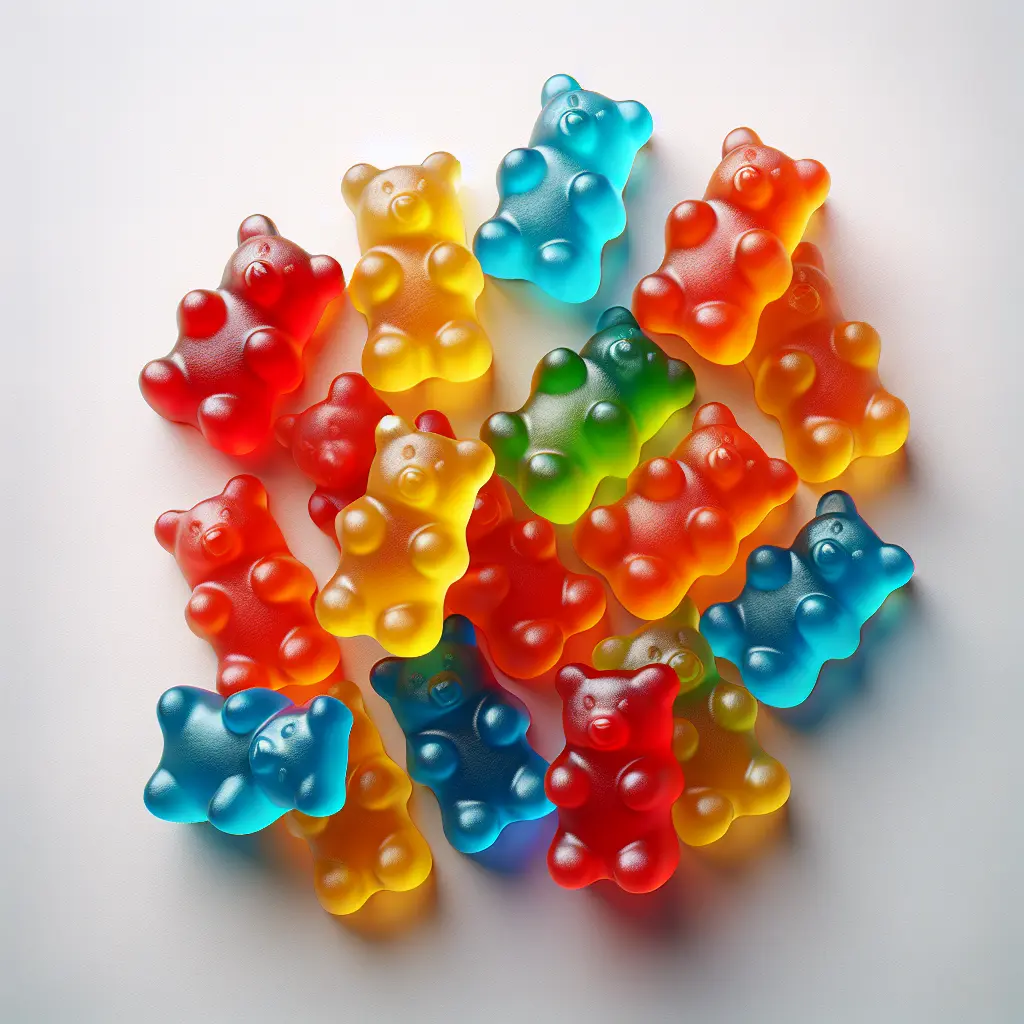Gummy Bears: A Culinary Delight
Gummy bears, those irresistible chewy candies, have become a ubiquitous presence in the world of confectionery. These colorful treats, often adorned with a sugary coating, have captured the hearts and palates of individuals of all ages. In this article, we embark on a journey to unravel the captivating world of gummy bears, exploring their nutritional composition, manufacturing secrets, and the rich history that has shaped these beloved sweets.
Nutritional Profile: A Sweet Indulgence
Gummy bears, while providing a momentary burst of sugary satisfaction, offer limited nutritional value. Each serving of approximately 10 gummy bears contains approximately 87 calories, primarily derived from carbohydrates. These candies are virtually devoid of protein and fat, with negligible amounts of fiber. However, the sugar content in gummy bears is a notable aspect, with each serving containing around 13 grams of sugar. This sugary composition should be considered when consuming these treats to maintain a balanced diet.
Manufacturing Marvel: The Art of Gummy Creation
The production of gummy bears is a fascinating process that has undergone advancements over time. Traditionally, these candies were meticulously crafted using gelatin, a protein derived from animal collagen. Gelatin imparts the characteristic chewy texture to gummy bears, allowing them to retain their shape while offering a satisfying bite. However, with the growing demand for vegetarian and vegan options, manufacturers have introduced pectin-based gummy bears, providing an alternative suitable for individuals with dietary restrictions.
The manufacturing process involves blending the gelatin or pectin with water, sugar, corn syrup, and flavorings. This mixture is then heated and poured into molds, where it undergoes a cooling and solidifying stage. Once set, the gummy bears are coated with a thin layer of vegetable oil or beeswax to prevent sticking and impart a glossy finish.
A Journey Through Time: The History of Gummy Bears
The origins of gummy bears can be traced back to the early 20th century in Germany. In 1922, a confectioner named Hans Riegel Sr. experimented with creating a fruit-flavored candy that resembled dancing bears, a popular motif at the time. These gummy bears, initially marketed as "Tanzbären" (dancing bears), quickly gained popularity and became a beloved treat in Germany.
Over the years, gummy bears have evolved in flavors, shapes, and colors, capturing the imaginations of children and adults alike. Today, these candies are produced in a myriad of vibrant hues and countless flavors, ranging from classic fruit flavors to more whimsical creations. Gummy bears have become an integral part of popular culture, featuring in movies, television shows, and even video games.
Conclusion
Gummy bears, with their vibrant colors, chewy texture, and sweet flavors, have become an iconic confectionery delight enjoyed by people worldwide. While they may not offer significant nutritional value, these candies provide a momentary burst of sugary indulgence. Whether enjoyed as a nostalgic treat or as a playful snack, gummy bears continue to captivate taste buds and bring joy to countless individuals.
How many calories are in Gummy Bears?
Each 10 gummy bears of Gummy Bears contains 87 calories.
Gummy Bears Nutritional Information
| Nutrient | Amount per 10 gummy bears (22g) |
|---|---|
| Calories | 87 Calories |
| Protein | 0g |
| Fat | 0g |
| Saturated Fat | 0g |
| Cholesterol | 0mg |
| Carbohydrates | 22g |
| Dietary Fiber | 0g |
| Sugar | 13g |
| Sodium | 0.0097mg |
| Potassium | 0.0011mg |
| Calcium | 0.0007mg |
| Iron | 0.0001mg |
